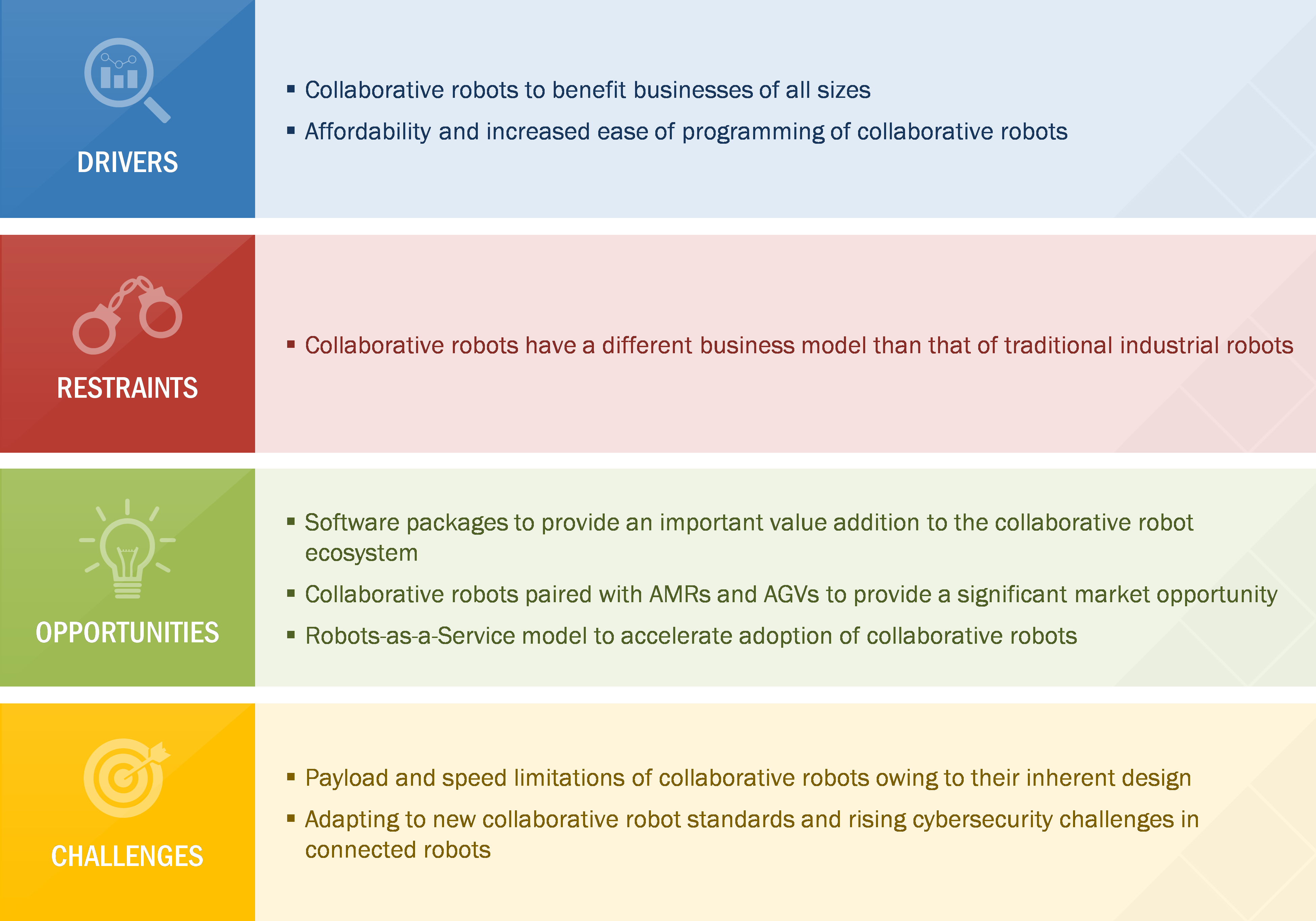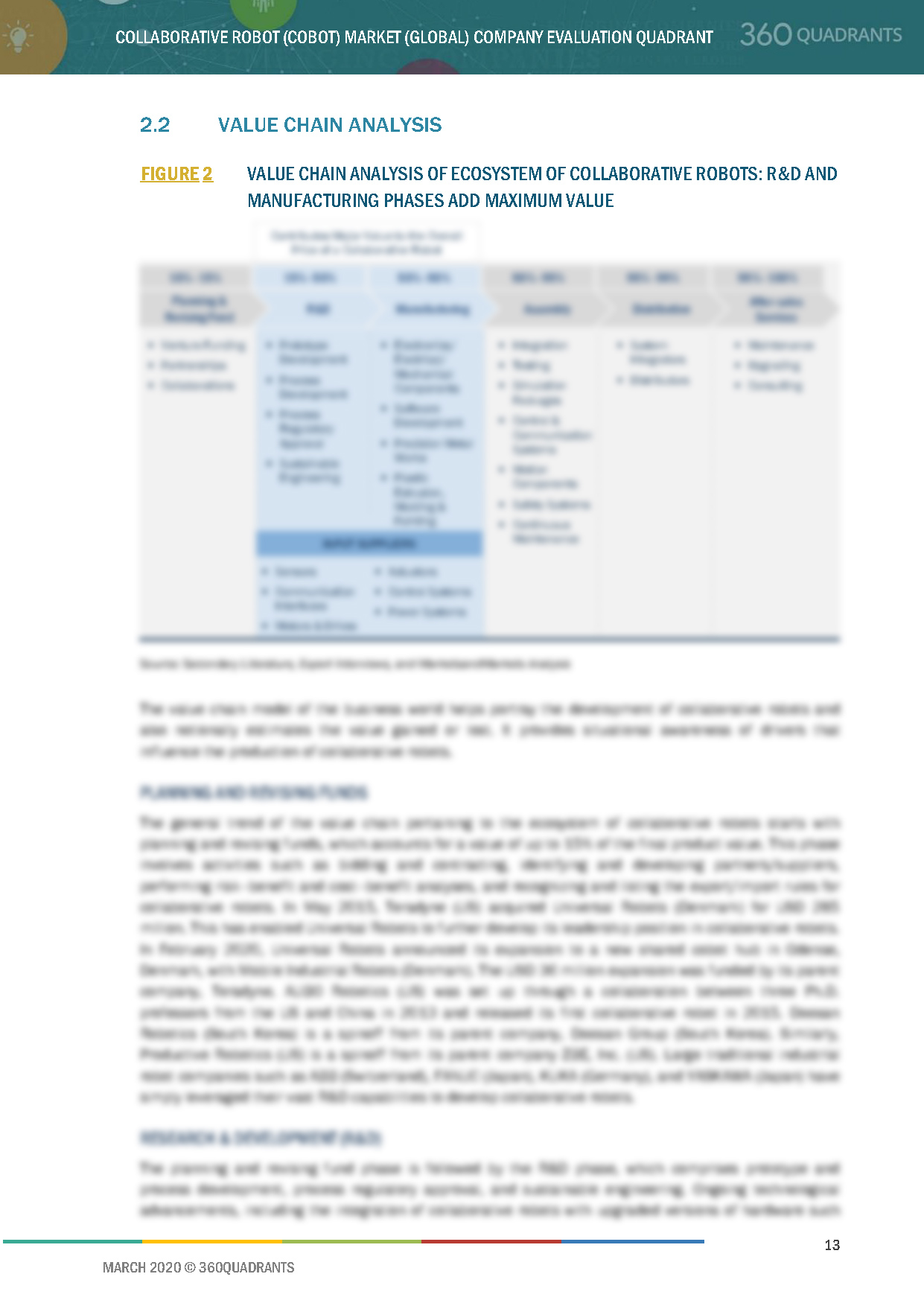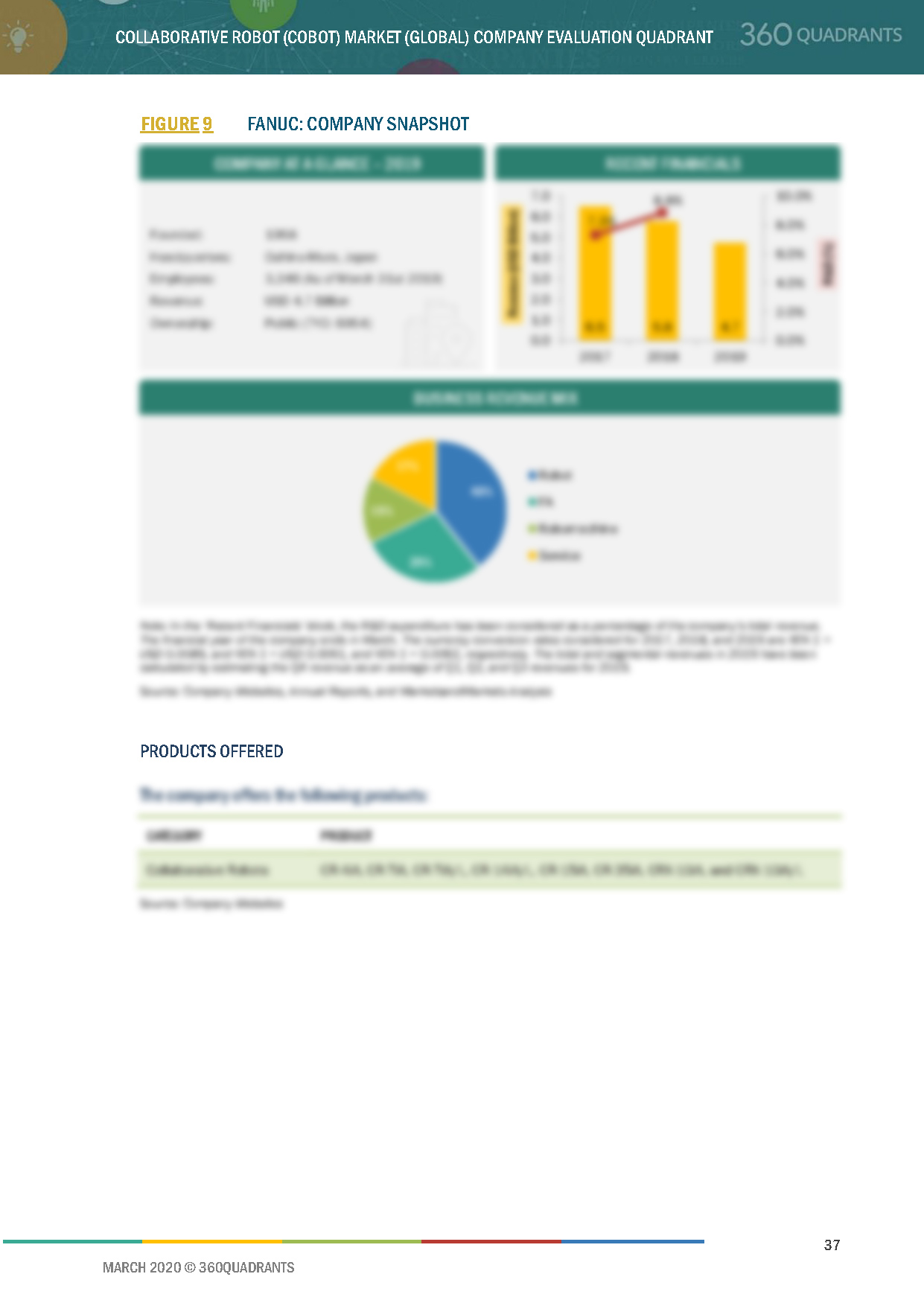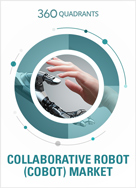Collaborative robots are an emerging technology of automation where robots are designed in such a way that they can work alongside human workers with precision, strength, and speed for achieving high efficiency in production. Collaborative robots are further differentiated from industrial robots in a number of ways, such as the absence of “safety fence” while working alongside humans, simplified programming and reduced setup time, integration of auto-speed reduction and distance monitoring or proximity sensors, and ability to reduce motor power and force during application to avoid harm to a worker.
Visionary leaders are the leading market players in terms of product portfolio, geographic reach, innovative technologies, and adoption of growth strategies. The SWIR market is moderately dominated by the players covering a major share of the market. These players have a broad product portfolio that caters to most of the regions globally. Visionary leaders primarily focus on acquiring the leading market position through their strong financial capabilities and well-established brand equity.
Most of the dynamic players are classified as companies which focus on specifically one or two technologies, however, hold a fair position in the market along with a presence in various regions globally. These players have low product offerings with stronger business strategies. The vibration monitoring market has many companies operating since the past decade, which are largely dependent on their competitive R&D activities.
The collaborative robots market is highly dependent on innovators because high capital and investments are required in the field of product and software development, and it is difficult for new players to enter this market and bring new co-bots to create a fine line of differentiation from the existing traditional industrial robots. In addition, there is significantly high demand for these products; therefore, new players can make steady profits.
As the market poses moderate threat to new entrants in establishing their footprint, there are several players providing collaborative robotics systems to diverse clientele groups globally.
Collaborative Robots
- Enterprise
- SME
- Startups
 Collaborative robots (Cobots) are designed to work alongside humans to achieve high efficiency in production. Cobots differ from industrial robots in several ways, such as the elimination of a ‘safety fence’ while working alongside humans, simplified programming and reduced setup time, integration of collision detection and distance monitoring, and ability to reduce motor power and force when operating in collaborative mode. They are safe and easy to operate, and yield quick return on investment (ROI) within 6 to 12 months. Collaborative robot operations in mainly defined in the ISO/TS 15066 standard. Other standards governing safe and collaborative operations in the robot ecosystem are ISO 10218-1:2011, RIA/ANSI R15.06-2012, ISO 12100:2010, and ISO 13849-1:2008.
Collaborative robots (Cobots) are designed to work alongside humans to achieve high efficiency in production. Cobots differ from industrial robots in several ways, such as the elimination of a ‘safety fence’ while working alongside humans, simplified programming and reduced setup time, integration of collision detection and distance monitoring, and ability to reduce motor power and force when operating in collaborative mode. They are safe and easy to operate, and yield quick return on investment (ROI) within 6 to 12 months. Collaborative robot operations in mainly defined in the ISO/TS 15066 standard. Other standards governing safe and collaborative operations in the robot ecosystem are ISO 10218-1:2011, RIA/ANSI R15.06-2012, ISO 12100:2010, and ISO 13849-1:2008.
The collaborative robot market is estimated to reach USD 8 billion at the end of the forecast period 2020–2026. The ease of design and deployment of Cobots, coupled with their competitive pricing and configurability, is driving the market growth. Many SMEs and large manufacturers that have deployed collaborative robots are benefiting in terms of general competitiveness, increased production, and enhanced quality of their products.
SME’s are expected to quickly adopt collaborative robots in their production processes

This report identifies and benchmarks best cobot manufacturers such as Universal Robots (Japan), FANUC (Japan), KUKA (Germany), ABB (Switzerland), Rethink Robotics (US), and evaluates them on the basis of business strategy excellence and strength of product portfolio within the collaborative robot ecosystem, combining inputs from various industry experts, buyers, and vendors, and extensive secondary research including annual reports, company press releases, investor presentations, free and paid company databases.These best cobot manufacturers are rated and positioned on a 2x2 matrix, called as ‘Company Evaluation Quadrant’, and identified as Visionary Leaders, Dynamic Differentiators, Innovators, or Emerging companies.
The report includes market specific company profiles of 17 top collaborative robot companies and assesses the recent developments that shape the competitive landscape of this highly fragmented market.
This report identifies and benchmarks best collaborative robot manufacturers such as Universal Robots, Fanuc, ABB, KUKA, Rethink Robotics, and evaluates them on the basis of business strategy excellence and strength of product portfolio within the Cobot ecosystem, combining inputs from various industry experts, buyers, and vendors, and extensive secondary research including annual reports, company press releases, investor presentations, free and paid company databases. They are rated and positioned on 2x2 matrix, called as ‘Company Evaluation Quadrant’, and identified as Visionary Leaders, Dynamic Differentiators, Innovators, or Emerging companies.
SAMPLES:





- Updated version of this Quadrant
- Different Company Evaluation Quadrant
- 'Startup Only' Company Evaluation Quadrant
- Region or Country specific evaluation
- Application or Industry specific evaluation ..Read More
- Submit a Briefing Request
- Question about our published research
- Request for evaluation of your organization for specific market
- Request for re-evaluation of Company Evaluation Quadrant ..Read More



